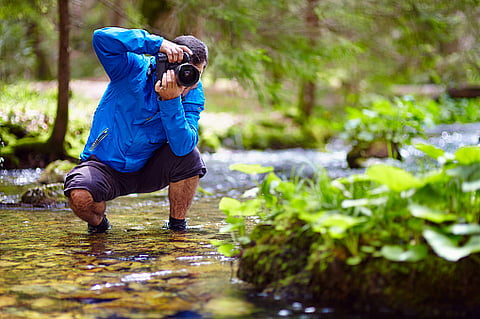
- Home
- न्यूजग्राम
- India
- World
- Politics
- Entertainment
- Culture
- Lifestyle
- Economy
- Sports
- Sp. Coverage
- Misc.
- NewsGram Exclusive
- Jobs / Internships

While it would be ideal to travel with a large selection of cameras to get one great shot, let's be honest, it's not fun to lug around suitcases while taking pictures. Thus, when packing your ideal travel bag, weight and size are crucial. These are your essentials for the best travel photographs.
Lenses:
We are not focusing on the camera, assuming you own one, DSLR or mirrorless, with interchangeable lenses. It is common knowledge for any good photographer that while the body of the camera provides the basis for stunning photography, the entire experience hinges on the lens. No wonder, the options for different kinds of lenses are so many that it can easily confuse even the best professional travel photographer out there. While your heart might implore you to carry different lenses, you should carry just about two that could cover most of the photographs. Although we don't believe in a one-size-fits-all approach, carrying a walk-around and a fast prime lens is a good policy. When choosing a walk-around lens, go for the one with a wide aperture. A wide aperture lets in more light making the lens suitable for a range of photography situations.
On Camera Storge:
On-camera storage or an SD card is as important as a camera or lens. Choosing the right storage can be pretty tricky. You would want a high-capacity SD card that is purpose-built for photographers. For example, the SanDisk Extreme PRO SDXC UHS-I card. It is built for and tested in harsh conditions, and is temperature, water, shock, and x-ray proof. It comes in up to 1TB1 capacities. With SanDisk Quick Flow Technology2, this card optimizes performance for timesaving media offloads with quick transfer speeds up to 200MB/s3. Pair with the SanDisk Professional PRO-READER SD and micro SDTM to achieve maximum speeds. If your camera is UHS-II compatible, go for the SanDisk Extreme PRO SDXC UHS-II card. This card can deliver extremely fast transfer speeds of up to 300MB/s3 and can seamlessly capture uninterrupted cinema-quality 8K, 4K, and Full HD video.
Extra batteries:
Well, it is just unimaginable for any photographer to travel without additional batteries as backups in case of eventualities. It is always better to carry backup batteries to overcome the hassle of charging, in case you are at a remote location, or staying outdoor in a tent. If you are traveling by air, then you should be aware of any restrictions by specific countries or airlines. Generally, the rule allows you to travel with lithium-ion battery cells; one can carry multiple batteries of less than 100Wh, in a protected case. For international flights, it is safer to carry 95Wh batteries, as the lithium-ion batteries come in 95Wh, 130Wh, 160Wh, and 190Wh variations.
Fast, Portable Storage:
Travel photographers must also carry external storage. The important point to keep in mind while selecting a portable storage option is that it should be lightweight, fast, and rugged. For example, SanDisk Extreme PRO Portable SSD V2 offers lightning-fast read/write speeds of up to 2000MB/s3 and comes in up to a massive 4TB1 capacity. You can take this drive anywhere with you, as it has up to two-meter drop protection and IP55 water and dust resistance. It also has a handy carabiner loop so it can be easily secured to your belt or backpack. With this lightweight drive on you, don't worry about deleting any shot, good or bad, they are all memories.
Lightweight Tripod:
For travel, you must have a strong, compact yet lightweight tripod. It should fit easily into a compact travel bag. So, the requirement for travel tripods is a bit different from the conventional ones. It should make the shooting experience efficient but most importantly enjoyable instead of weighing you down. Go for carbon fiber built which is a superior material to aluminum- and offers a stronger and lighter body, but on the downside, it may be costly. Also, it makes sense to pick a tripod that is suitable both for photography and videography. You must know what must-have features you want in your tripod, and which one are you willing to make a concession and buy accordingly.
There are moments when we regret not bringing a specific lens or tripod. With practice, we become more adept at bringing the right equipment for the type of photos we will be taking. The most crucial thing, though, is to appreciate every moment of our journey as we advance in our art. (AA/IANS)
